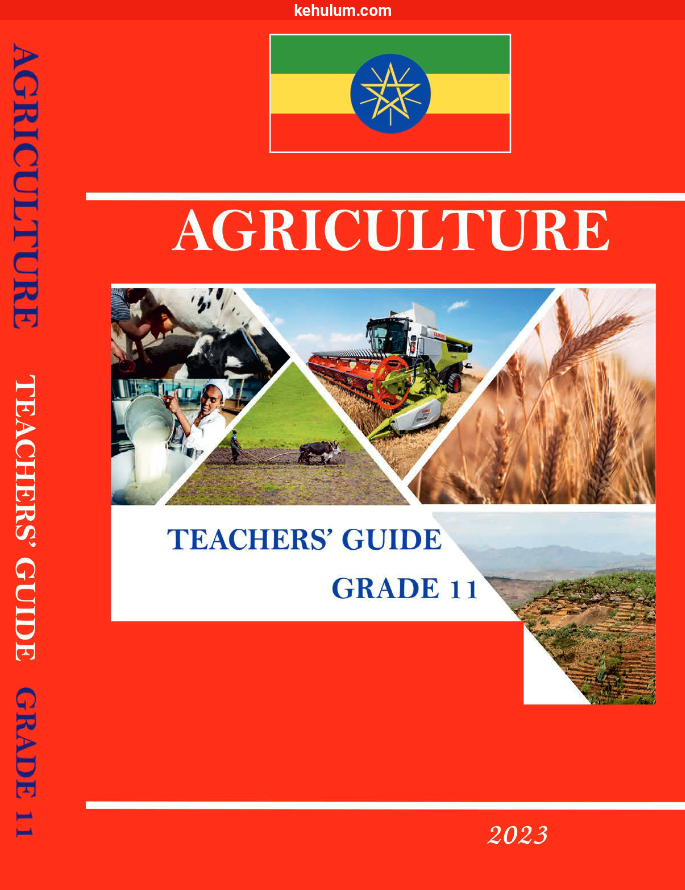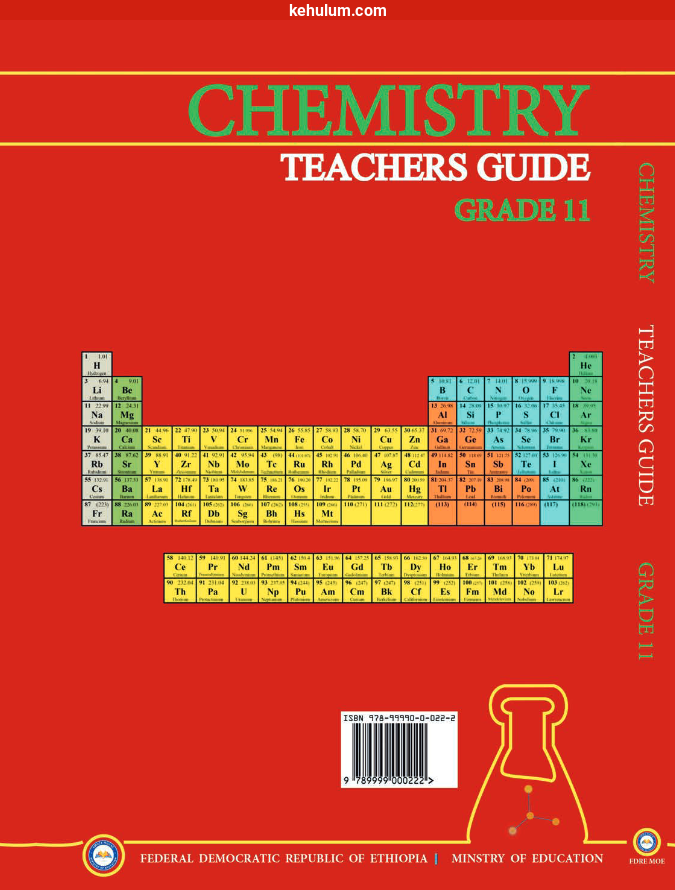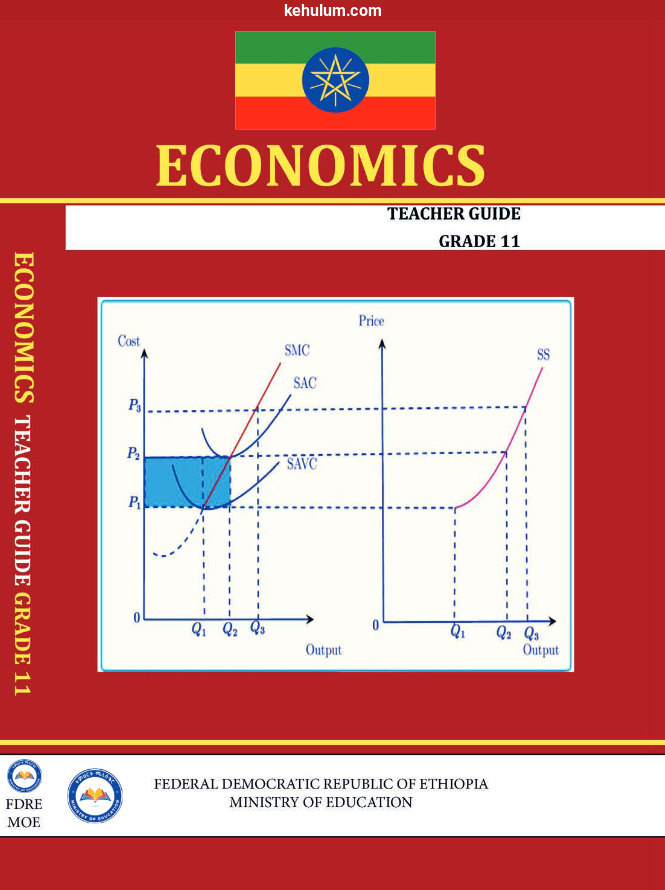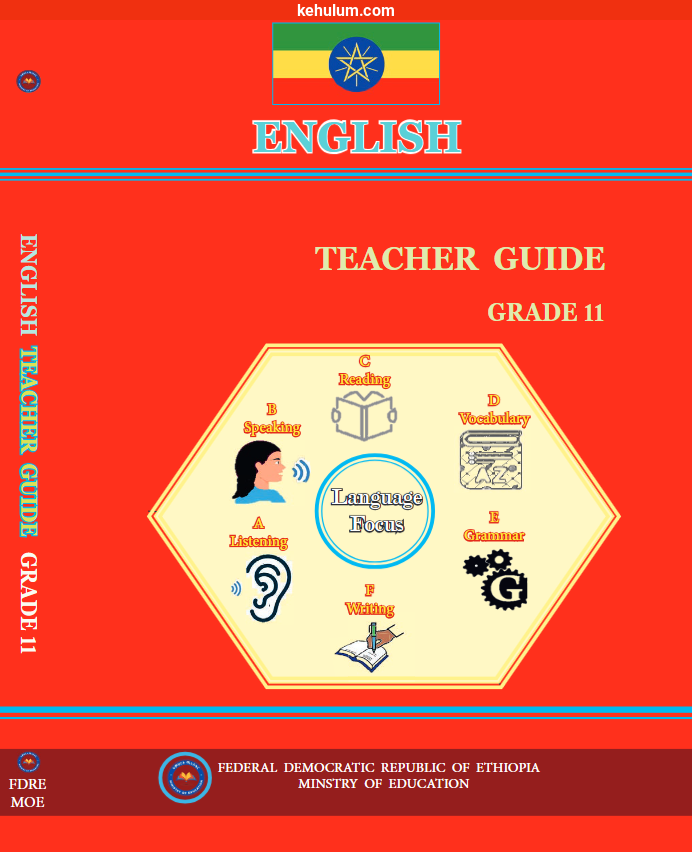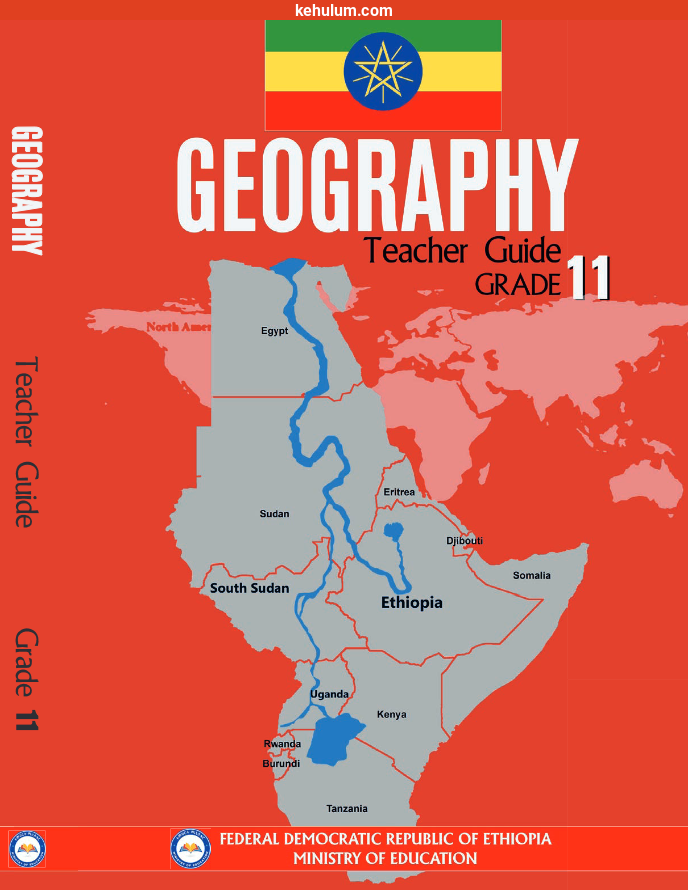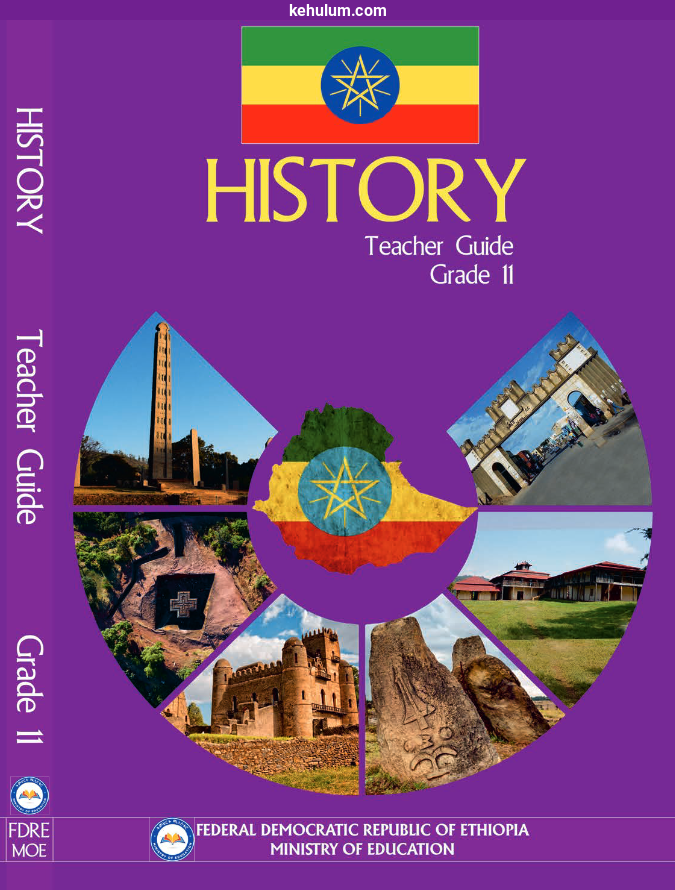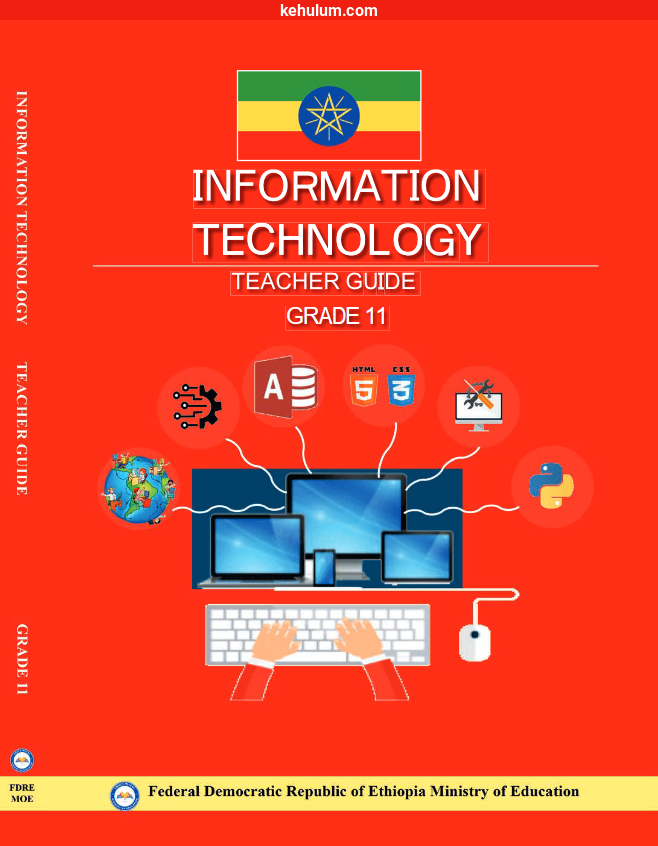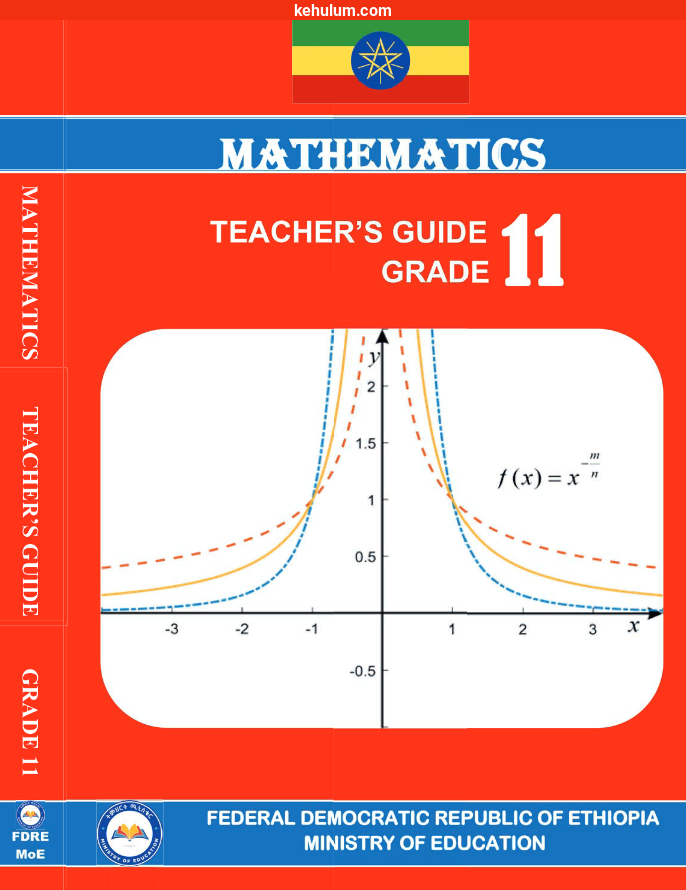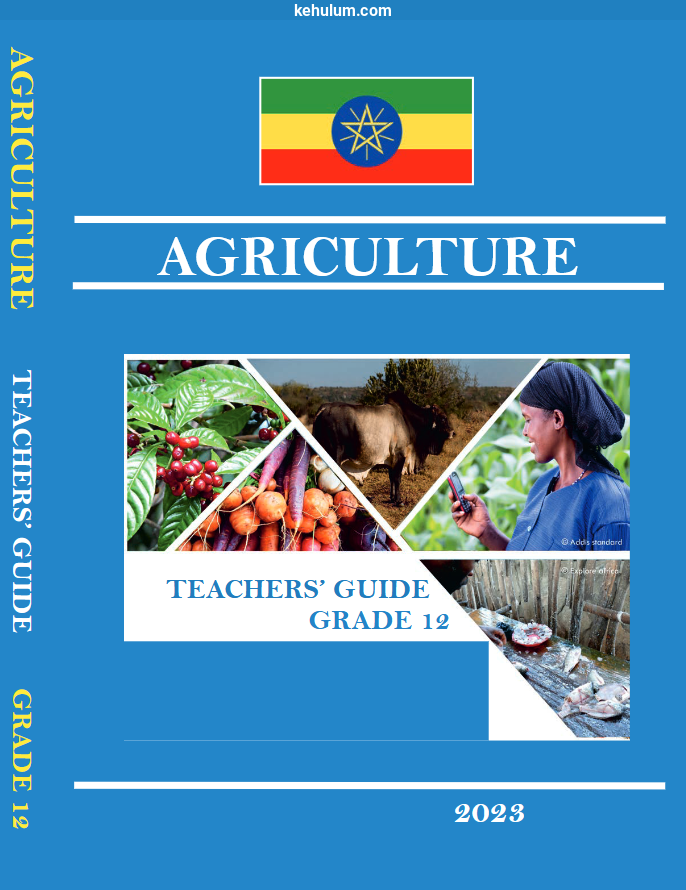Advertisement
Ethiopian New Curriculum Grade 11 Agriculture Teacher’s Guide Overview
Download the Ethiopian New Curriculum Grade 11 Agriculture Teacher's Guide PDF from kehulum.com for free. This comprehensive guide, published by the Ethiopian Ministry of Education in 2023. it provides detailed instructions and practical knowledge designed specifically for teachers handling Grade 11 Agriculture under the new curriculum. It covers 16 units spans 265 pages, and encompassing crop production, farm animal management, natural resources, climate adaptation, nutrition, and mechanized farming. This Teacher's Guide is essential for teacher's aiming to deliver effective, up-to-date agricultural education.
Authors/Writer
his Teacher's Guide is authored by Seid Ali and Shimelis Gizachew (PhD)
Chapters Overview
The Ethiopian New Curriculum Grade 11 Agriculture Teacher’s Guide consists of 16 units. Each unit equips teachers with the knowledge and tools to deliver complex agricultural concepts through practical Ethiopian contexts, indigenous knowledge integration, classroom discussion prompts, and visual aids designed to enhance student understanding and real-life agricultural application.
Unit 1: Introduction to Crop Production
This unit helps teachers explain fundamental crop production concepts including definitions, the origin of domesticated crops, classification of crop plants, cropping systems, and the role of indigenous knowledge in farming practices. Lessons emphasize local crop varieties and traditional agricultural practices.
Unit 2: Field Crops Production and Management
Teachers guide students through the production and management of cereal and pulse crops, focusing on cultivation techniques suited for Ethiopia’s diverse agro-ecological zones. This unit highlights practical management and crop-specific challenges.
Unit 3: Industrial Crops Production and Management
This unit introduces oil, fiber, and sugar crops. Teachers learn to convey production methods and economic importance, supplemented with case studies on Ethiopian industrial crop farming.
Unit 4: Introduction to Farm Animals
Teachers are prepared to explain different farm animal species, their importance to agriculture, and common constraints faced in animal production, along with mitigation strategies tailored for Ethiopian livestock systems.
Unit 5: Animal Feeds and Feeding Practices
Focuses on feed resource classification, nutrient requirements, feed formulation, conservation methods, and compound feed manufacturing, enabling teachers to teach practical feeding strategies critical for farm productivity.
Unit 6: Animal Genetics and Breeding Practices
This unit equips teachers to explain the principles of animal genetics, breed improvement methods, reproductive technologies, and the importance of record keeping for sustainable breeding programs.
Unit 7: Farm Animals Housing
Teachers learn to instruct on the significance of proper animal housing, types of housing structures, site selection, and construction guidelines to improve animal welfare and productivity.
Unit 8: Basic Animal Health and Disease Control
This unit covers major diseases affecting farm animals, parasite management, disease prevention, and control measures, emphasizing practical health management applicable to Ethiopian farming contexts.
Unit 9: Dairy Cattle Production and Management
This unit focuses on dairy cattle breeds, feeding, milk production and processing, housing, disease management, and profitability analysis, providing a comprehensive overview of dairy farming practices.
Unit 10: Introduction to Natural Resources
Teachers guide students through the types and importance of natural resources, causes and effects of degradation, fostering environmental awareness linked to agriculture.
Unit 11: Management of Natural Resources
This unit covers soil, water, forest, and wildlife management, environmental protection, and the application of indigenous knowledge in sustainable resource use.
Unit 12: Concepts of Biodiversity
Emphasizes biodiversity definitions, scope, values, threats, and conservation efforts within Ethiopia, promoting biodiversity awareness among students.
Unit 13: Climate Change Adaptation and Mitigation
Teachers help students understand climate change definitions, impacts, adaptation and mitigation strategies, and indigenous approaches relevant to Ethiopian agriculture.
Unit 14: Mechanized Farming
Introduces mechanized farming concepts, farm tools, and equipment usage, encouraging modernization of agricultural practices.
Unit 15: Introduction to Human Nutrition
Covers basic nutrition terms, nutrient functions, food groups, nutrition security, and the link between agriculture and nutrition, highlighting food security challenges in Ethiopia.
Unit 16: Diversified Food Production and Consumption
Teachers learn to explain the importance of diversified diets, dietary strategies, nutrient enrichment, and nutrition-sensitive agriculture, including indigenous knowledge on malnutrition causes.
Advertisement
Frequently Asked Questions
How many units are covered in the Ethiopian Grade 11 Agriculture new curriculum teacher's guide?
The Teacher's Guide supports a total of 16 instructional units based on the new Ethiopian curriculum.
How many pages are in the Ethiopian Grade 11 Agriculture new curriculum teacher's guide?
The Teacher's Guide contains 265 pages filled with detailed instructional strategies.
How do I download the Ethiopian Grade 11 Agriculture new curriculum Teacher's guide PDF for free?
Simply click the download button on the page
Is the Grade 11 Agriculture teacher's guide available for both old and new curriculum?
Yes, kehulum.com provides teacher guides for both Old and New Ethiopian curriculum.
Related new curriculum agriculture Teacher's Guide
Advertisement

